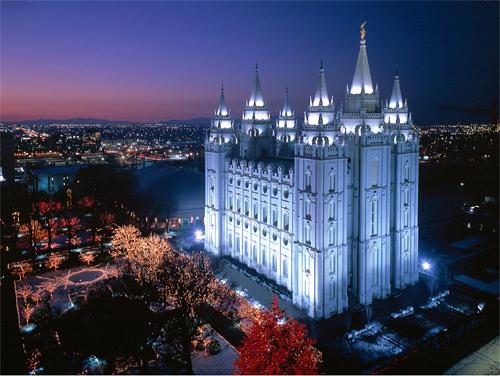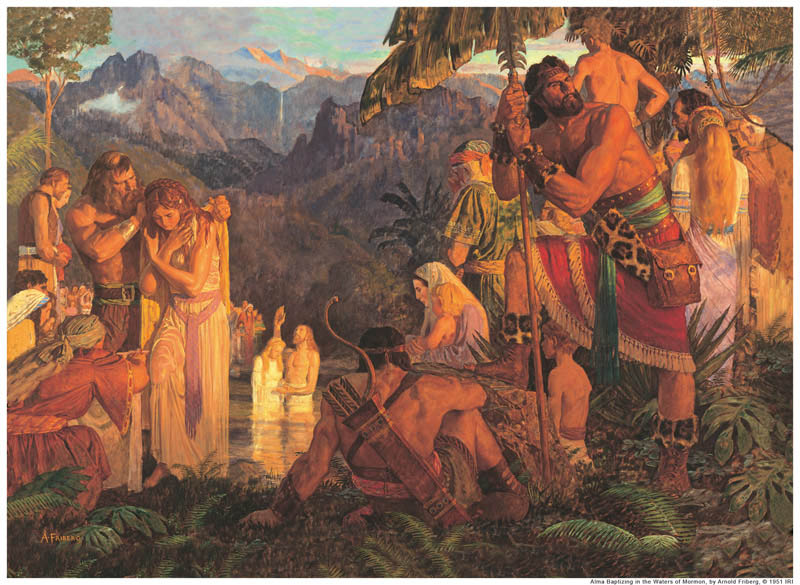Young LDS women across the globe are calling for a return to virtue. They understand they will not be perfect every day, as they strive to emulate the Savior, Jesus Christ, but they also have the reassurance of being able to repent of their sins.

Forgiven
Repentance is a gift from God, made possible by the sacrifice of the Savior in Gethsemane and then on the cross. Jesus
offered to do something none of us could do: He would come to earth, with a unique heritage that included a mortal mother and divine Father, and, with this heritage to make it possible, would live a sinless life. It was required that the gift be given voluntarily, with the ability to back out at any time, and this, Jesus did. Men placed Him on the cross, but they could not have kept them there if He had decided He valued His personal life more than He valued our eternal life.
The Young Women of the Church of Jesus Christ of Latter-day Saints, sometimes called Mormon girls, study this gift of repentance as part of the requirements to fulfill the Virtue Value in their Personal Progress program. The study of repentance is the third value experience.
The girls learn that repentance is made possible because of the Savior’s love for them and that the act of repentance is one of faith in Him. They are assigned to read and contemplate several key scriptures from books unique to the LDS faith.
The first is Moroni 10:32. Moroni was the final author of the Book of Mormon. He lived anciently and became a prophet as a teenager, when his father was killed. His counsel was this:
32 Yea, come unto Christ, and be perfected in him, and deny yourselves of all ungodliness; and if ye shall deny yourselves of all ungodliness, and love God with all your might, mind and strength, then is his grace sufficient for you, that by his grace ye may be perfect in Christ; and if by the grace of God ye are perfect in Christ, ye can in nowise deny the power of God.
The girls learn that grace is what allows them to be perfected in Christ and to rise again from the dead, but that they must also become perfected. The Bible talks often about the importance of keeping the commandments of God, and the girls learn to understand why this matters.
Next, they’re sent to the Book of Enos, a very small book in the Book of Mormon. (The Book of Mormon is compiled of many smaller books, as is the Bible.) Enos was a young man with a strong spiritual heritage-the son and grandson of prophets. He went into the woods to hunt (although this may be a metaphor.) While there, he began to contemplate the ways in which he was not living up to his commitments to the Savior. Soon, his heart was filled with guilt and sadness, and he longed for forgiveness. He prayed all day and all night before receiving reassurance that his sins were forgiven him. At that time, his prayers moved outward-to his own people, and then to his enemies. His heart was enlarged by his own increase in faith. Enos teaches the girls the critical aspects of repentance-true sorrow and a desire to change-and the blessings that come from it as well.
The next step in their personal study is found in a booklet for teenagers called, “For the Strength of Youth.” The brief section on repentance defines the teaching and warns them Satan will try to interfere with this process. He doesn’t want them to repent, and so he fills their minds with lies. He tells them they’ve sinned so much God will never forgive them, and they can’t repent. Satan tries to make them think they can sin now knowingly, with the intention of repenting later on when they want specific blessings. The girls are warned to avoid these lies, to live the best they can live, but to repent when it’s necessary.
Baptism cleanses us of our sins, but it is not necessary to be re-baptized in order to repent of most sins. Each week, members of the church take the Sacrament, similar to the communion of other religions. The girls are taught to study the prayer given by worthy priesthood holders to bless the sacrament, and to evaluate for themselves how to partake worthily each week and begin anew.
Having now studied virtue from several different angles, they’re asked to create a plan that will allow them to live a virtuous life, and to make certain their lives are filled with worthwhile activities. They record their plan in their journals.
When youth make their own plans, and put their commitments into their own words, they are more likely to keep them. Rather than signing a pre-written pledge, they are studying the issue for themselves, deciding what it means to them, and then choosing how to live it. They are learning the proper way to choose a lifestyle and learning how to plan for results, rather than just hoping to get them. As adults, they will be prepared to keep the covenants they make with God and to design a life, rather than letting one just happen.
Repentance is a key principle in Mormon beliefs, because it makes it possible to return to God someday. The first step to repentance is to have faith in God. As stated earlier, repentance is an act of faith, because it requires us to really believe there is a God and that it is worth the effort required to repent of sins.
Repentance requires a true sorrow for sin. It’s not enough to sin, hurry home, do a quick repentance, and head back out to repeat the sin. Unless there is sorrow and a sincere desire to change, repentance will not work. It must be an honest process.
Confession is the next step. Most sins can be confessed directly to God and to those who were hurt by the sin. Serious sins must be confessed to church leaders, who can then guide the member through the process of repentance.
The sin must then be forsaken and not repeated. The ability to change the way one lives is an indication of the depth of the repentance. If the member falters, the process must begin again.
Restitution must be made as far as possible. We must pay for the damage we’ve done, or make better the lives we’ve harmed. The member must undo the damage as much as possible.
Finally, one must then fill one’s life with good and worthy activities. The space that was filled with sin should be now filled with activities that please God and that make it harder for us to continue sinning. The girls are taught that doing this first can help to prevent the first occurrences of sin.
The virtue value helps young girls to grow up living as purely as possible. While the life they choose may seem old-fashioned and unobtainable to some who’ve been tricked into believing this, there are millions of girls who are choosing virtue for themselves, and who are avoiding the consequences of unvirtuous choices.
About Terrie Lynn Bittner
The late Terrie Lynn Bittner—beloved wife, mother, grandmother, and friend—was the author of two homeschooling books and numerous articles, including several that appeared in Latter-day Saint magazines. She became a member of the Church at the age of 17 and began sharing her faith online in 1992.





